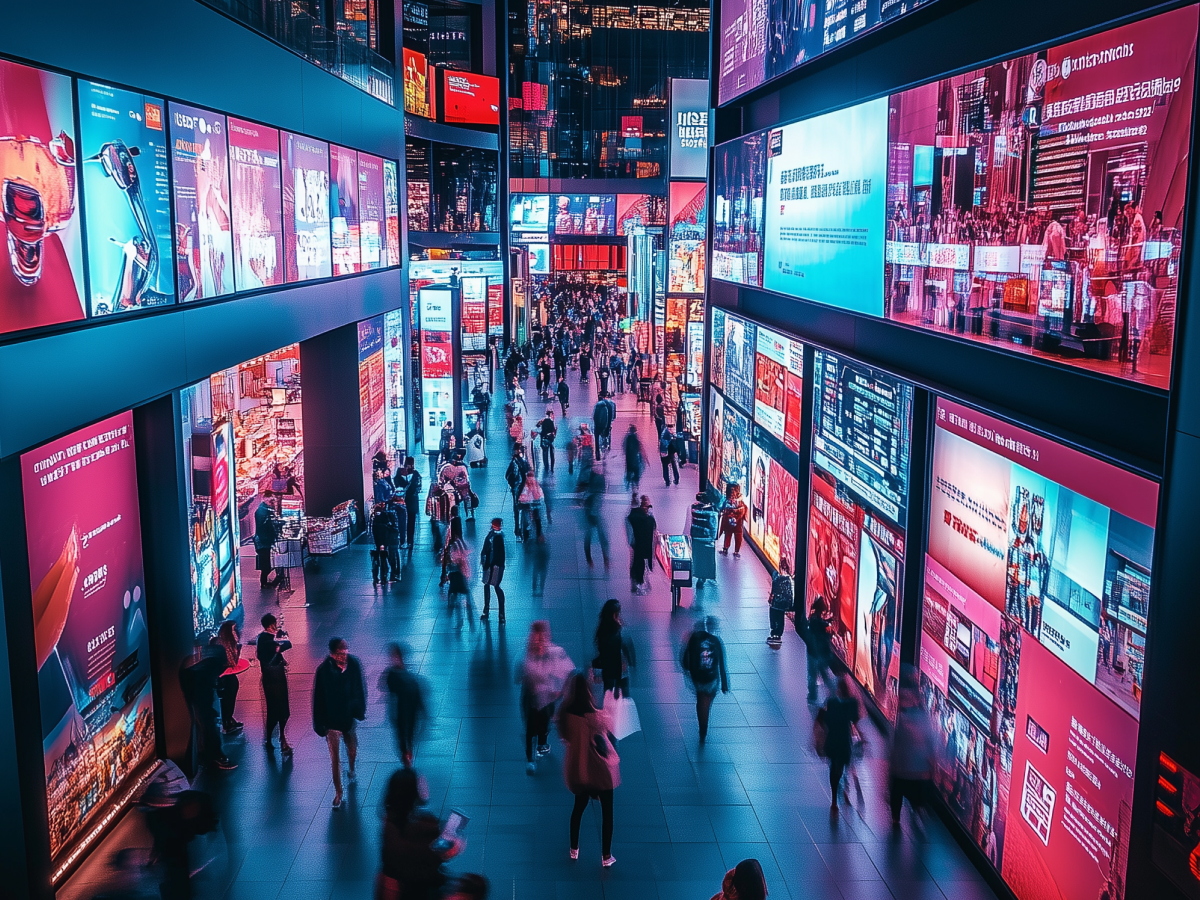Global ad spending is expected to slow
This isn’t news that anyone in leadership wants to hear, but it’s happening. Markets are reacting to an unpredictable geopolitical environment, and advertisers are pulling back. We’re seeing a fundamental shift in how marketing dollars are allocated due to external stressors that companies can’t control.
The core issue is trade instability. Former President Trump’s policies on tariffs, particularly the ones recently aimed at the automotive sector, have thrown much of the global supply chain into uncertainty. When manufacturers and retailers can’t forecast costs, they reduce investments. One of the first things to get cut in a risk-heavy environment is advertising. The reasoning is simple: preserving cash comes before brand expansion when businesses are under pressure. WARC, a respected ad spend tracker, is modeling out three growth scenarios for global ad spending. Even in the worst case, growth will continue, but slower. The projection drops from a baseline of 6.7% to 6.4% in 2025. Doesn’t sound like much at first glance, but at a global scale, that’s billions of dollars shelved.
What’s concerning is the trend by vertical. In WARC’s view, automotive advertising is headed for a 7.4% decline. Retail: down by 5.3%. For tech and electronics, WARC expects advertising growth in those categories to drop by half due to the manufacturing disruptions caused by rising trade barriers. Any executive with global operations or investments in these categories needs to accept this data as early warning. Advertising is a forward-looking metric. When it shrinks, it means companies are already planning for less demand, tighter margins, or both.
This slowdown isn’t just the result of cautious CFOs. It reflects a broader anxiety about what’s ahead. Consumer confidence is weakening, and businesses are unsure if the trade environment is going to improve or get worse. In volatile economic times, ad spending becomes a pulse check for corporate sentiment, and right now, that pulse is warning us to pay attention.
The smart play for executives isn’t to panic. It’s to reallocate, optimize, and explore new demand signals. Growth is still on the table, but it now calls for sharper focus, leaner operations, and a tighter feedback loop between business outcomes and marketing dollars. Make sure your teams understand that this is strategic recalibration, not retreat.
Regulatory challenges are intensifying uncertainty for major digital advertising platforms
Digital advertising is still strong, but the ground beneath it is shifting. Tech giants like Google, Amazon, Meta, and Apple are now facing structural and legal challenges that could redefine how the market operates. For leadership teams relying heavily on digital channels, this matters a lot. These platforms aren’t just customer acquisition tools. They’re infrastructure. And when the infrastructure is under threat, the system gets unstable.
The most immediate concern is the level of regulatory pressure being applied, particularly in the U.S. and Europe. Google has already been ruled to hold an illegal monopoly in the search market. One proposed solution, spinning off its Chrome browser, is not a small gesture. It would be a direct hit to Google’s ad pipeline and a structural shift that could force advertisers to reassess how they reach users across the web. If that spin-off happens, it could trigger a ripple effect in how data is tracked, monetized, and governed by peers in the ecosystem.
Apple is also in regulatory crosshairs due to privacy and anti-competitive behavior in its App Store. Meta and Amazon are facing similar scrutiny around data use and market dominance. The cumulative risk here isn’t one specific ruling, it’s a new operating environment with less predictability, slower iteration cycles, and heavier compliance costs. If your marketing strategy is too tightly coupled to one or two platforms, you lose flexibility under this kind of pressure.
For business leaders, the takeaway should be straightforward: diversify and prepare for volatility. Market dominance is no longer a shield against disruption. In fact, it’s often the trigger for it. New guardrails around privacy, consumer protection, and competition are coming online fast, and they’re not going to loosen. In this climate, relying on yesterday’s advertising playbook is a liability.
Still, these companies continue to lead. According to WARC, Alphabet, Amazon, and Meta are expected to control over half of global digital ad spending by 2029. That dominance means these platforms will still be relevant and powerful, but not immune to regulatory disruption. The challenge for executives is deciding how to adapt your use of those platforms while the rules keep shifting.
James McDonald, Director of Data, Intelligence and Forecasting at WARC, sums it up clearly: “Despite the growing volatility, digital advertising remains strong… but advertisers must be nimble in order to seize initiative in this shifting landscape.” He’s right. This isn’t a time for passive strategies or automatic renewals. It’s a time for precision, creativity, and highly informed risk management.
TikTok faces regulatory uncertainty
TikTok has become a major player in global attention and ad budgets, especially for younger demographics. But its future in the U.S. is uncertain, because its ownership structure is now a target for regulators and lawmakers. The U.S. government has set a deadline: by April 5, ByteDance must find a U.S.-based buyer for TikTok or risk an outright ban. This isn’t theoretical. The platform could be removed from app stores and made inaccessible within U.S. borders. For advertisers, that creates real disruption.
Even though TikTok doesn’t command the largest share of global advertising spend today, its impact on campaign strategy and cultural trends is undeniable. It’s shaped consumer behavior at scale. Brands that have built momentum on TikTok may now face a cliff, or at minimum, the need to shift their strategies quickly if the platform becomes abruptly inaccessible in a key market. That risk is now operational, not just hypothetical.
WARC’s data still shows growth in this segment. Social media advertising overall is projected to increase 12.1% year-over-year, reaching $286.2 billion, and that accounts for a quarter of all global ad spending. That’s not small. TikTok, while not controlling as much of that revenue, represents outsized cultural influence. It’s the speed and relevance of content discovery that’s drawn users and advertisers alike. For now, campaigns continue to perform, but leadership teams should plan for possible off-ramps and reallocation strategies.
For executives, risk planning on platforms like TikTok is no longer optional. You don’t want to be caught with active campaigns and growth strategies tied to a platform that suddenly disappears from the marketplace. Having backup plans for creator partnerships, paid media pipelines, and data attribution models guarantees continuity.
This also signals a larger shift: content platforms are now fully in the geopolitical spotlight. Decision-makers can’t treat platform choices as neutral. TikTok’s situation shows how policy and market access are increasingly tangled, especially for platforms with roots outside the U.S. Planning around ownership and compliance risk needs to be standard in all digital media strategies. The conversation has expanded from content and targeting to sovereignty, regulation, and legal viability, whether you’re ready or not.
Digital advertising remains resilient and continues to be dominated by a few powerful players
In spite of economic uncertainty and growing regulatory pressure, digital advertising is still expanding. The big players, Alphabet, Amazon, and Meta, are gaining share. These three companies are on track to control over 50% of global digital ad spending by 2029, according to WARC. That’s a clear signal of where the power continues to concentrate.
What’s holding this ecosystem together is performance. Advertisers don’t stay with platforms because of habit—they stay because the systems work. The ad tech behind these companies continues to deliver measurable results at scale. Even with shifts in privacy rules and increased scrutiny, these platforms provide reach, targeting, and data capabilities that smaller or newer platforms can’t replicate at the same level. For that reason alone, movement away from them isn’t happening at any meaningful pace.
At the same time, this dominance also invites pressure. Regulatory bodies are increasing activity, lawsuits are stacking up, and governments are pushing for restructuring or transparency. That instability matters, but it hasn’t yet broken the business case for advertisers. Most brands still view Alphabet, Meta, and Amazon as essential components of their performance marketing stack. As long as ads deliver results, and users stay on the platforms, the commercial model stays intact. That said, the ground rules are changing.
For executives, the message is clear: rely on these platforms, but don’t overexpose your strategy to any single one. Concentration of budget means concentration of risk. If regulatory outcomes limit data access, change pricing structures, or restrict platform-specific functionality, companies that diversified early will adapt faster. Flexibility will matter more than scale in situations where key tools become constrained or more costly to use.
James McDonald, Director of Data, Intelligence and Forecasting at WARC, put it sharply: advertisers must be nimble. The dominant position of these platforms is performance-based, and it’s under pressure. The companies that stay ahead of the curve are already making strategic adjustments: splitting ad budgets across more than the top three, building first-party data systems that reduce dependence on platform-owned insights, and upgrading internal teams to move faster under compliance constraints.
Digital ad growth is still real, it’s just more complex. Leadership teams need to understand the platform landscape from a media performance perspective, and from a geopolitical and legal standpoint. The ability to move quickly and strategically now creates real value.
Key takeaways for decision-makers
- Global ad market slowdown: Trade-related uncertainty and weaker economic signals are cooling global ad spend. Leaders should reassess 2025 planning, especially in categories like auto, retail, and tech, where ad cuts signal tightening demand forecasts.
- Platform risk is rising: Regulatory pressure on Google, Meta, Amazon, and Apple is accelerating. Executives should diversify media spend and prepare for implementation delays, pricing shifts, and potential compliance costs that could affect campaign scale and targeting.
- TikTok uncertainty demands contingency: TikTok’s potential U.S. ban creates instability for social media planning. Brands relying on the platform should have contingency plans in place and shift budgets toward platforms with more regulatory stability.
- Digital’s dominance stays strong: Despite volatility, Alphabet, Amazon, and Meta continue gaining digital ad market share. To maintain performance while reducing exposure risk, leaders should balance investments between dominant platforms and newer channels.




